Maintenance of garden fountains
and water features
Our garden fountains are made from the highest quality reconstituted limestone. The are engineered and designed for maximum beauty and utility, they are frost proof and require a minimum amount of maintenance. A small amount of regular maintenance will allow you to enjoy your fountain for many years. Primarily, keep you fountain free of debris. small leaves, twigs, etc. can restrict the water flow to the pump. The removal of small leaves etc from the fountain will also limit any algae growth helping to keep your water clear. if your fountain is beneath trees with frequently falling leaves, you may need to clean it out more frequently.
Maintaining the Correct Water Level

Maintaining the water level in your fountain is crucial to keeping it running properly, and preserving the life of your pump make sure the pump is always covered by the water. The water acts to lubricate and cool the pump as it operates.
Fountains are natural humidifiers for the environment, in doing so they lose a small amount of water to evaporation. The amount of water that each fountain consumes daily depends on how dry the air is and the ambient temperature.
together with what type of fountain you have. For example, a small fountain kept in a heated conservatory is going to have the water evaporate much faster than a large fountain in a shaded corner of the garden.
Generally speaking, you should add a small amount of water each day instead of adding several gallons every few weeks. Try to maintain a water level that covers the pump by at least 20mm.
A good way to remember to do this is to make it a habit to add water to your fountain when you are watering your plants.
This only applies in dry weather.
Cleaning your water pump
Cleaning your pump is recommended at least once a year, a good time to do this is when the fountain is drained and cleaned for the winter. A simple way to clean the pump during the year is to use a garden hose placed against the outlet of your fountain to 'back flush' clean water through the pump. If this fails to improve the flow a more complete cleaning should be undertaken, simply remove the cover at the outlet end of the pump then pull out the rotor. With warm soapy water clean out the housing and rotor, flush with clean water, (Note the bearing pin in the center of the hole, be careful not to damage it when cleaning) replace the rotor onto the center bearing pin and slide back into the slot, the rotor should turn easily with just a slight resistance from the magnets. Replace the end cover and that's it.
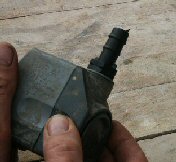
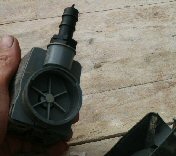
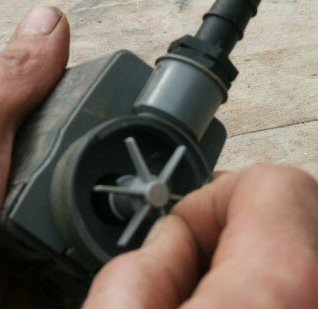
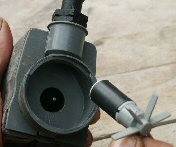
The pump illustrated is the Idra, other pumps in the range vary in appearance but the principle is the same.
If you live in a hard water area you may find that calcium deposits build up inside the pump where the rotor sits, if you find white deposits are forming inside the pump then a little vinegar can be used to clean it, other limescale cleaners can be used if you prefer but if left these calcium deposits will eventually restrict the rotor, slowing the pump and reducing the flow.
Garden Fountains and water features in winter
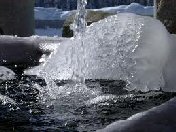
The UK has a mild enough climate that all our garden fountains can be left running virtually all year round. Even as the the frosty mornings arrive the movement of the water and the slight warmth generated by the pump will keep your fountain free from ice. However if the water in the fountain bowls is allowed to freeze it can as it expands cause damage to the pump and fountain bowl.
Your fountain may be left in severe freezing weather, provided it is drained.
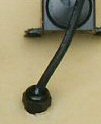 To drain your fountain undo the cable gland nut in the main bowl and carefully remove the rubber seal, all the water will then drain from the main bowl. Leave the nut and seal undone and this will prevent rainwater from refilling the bowls.
Tiered fountains and some pot water features also need the plastic pipe removed to allow the upper parts to drain.
To drain your fountain undo the cable gland nut in the main bowl and carefully remove the rubber seal, all the water will then drain from the main bowl. Leave the nut and seal undone and this will prevent rainwater from refilling the bowls.
Tiered fountains and some pot water features also need the plastic pipe removed to allow the upper parts to drain.
If you don't want to cover your fountain it is important to clean the bowls as dirt in the bottom can block the draining process and allow your bowls to refill with rainwater.
 Wall fountains should also be drained and covered to stop the rain/snow refilling the bowl. Wall fountains do not have a cable gland to allow draining so should be covered to prevent refilling by rain/snow (stretching some clingfilm over the bowl is a simple solution).
Wall fountains should also be drained and covered to stop the rain/snow refilling the bowl. Wall fountains do not have a cable gland to allow draining so should be covered to prevent refilling by rain/snow (stretching some clingfilm over the bowl is a simple solution).
If you have any questions or problems Contact us and we will do our best to help












